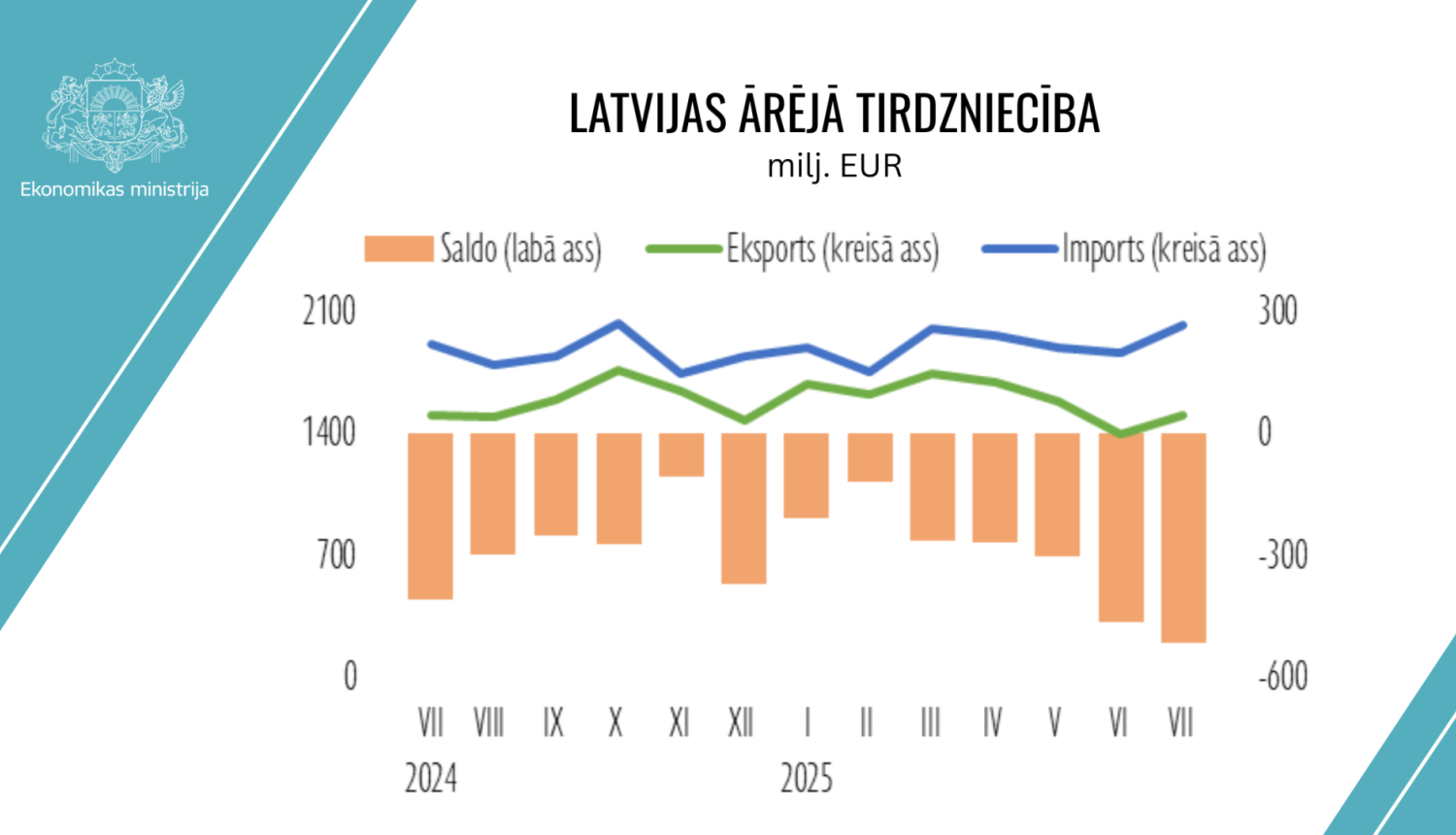After a decline in goods exports in June, July saw a slight increase in exports. Overall, during the first seven months of the year, exports showed an upward trend, supported by both foreign demand and businesses’ ability to adapt to changing conditions.
In July, the value of goods exports at current prices was 0.1% higher than a year earlier. Meanwhile, imports grew by 5.7%, and the trade deficit in June on an annual basis amounted to 14.6%.
Overall, in the first seven months of 2025, goods exports at current prices were 3.6% higher than a year ago, while imports rose by 7.7% during the same period.
On an annual basis, the fastest growth was seen in the export value of pharmaceutical products, dairy products, and electrical devices and equipment. Exports of footwear, land transport vehicles, and textiles also increased. In contrast, the export value of iron and steel, cereals, and mineral products declined.
In July of this year, compared to July 2024, exports to EU countries increased by 2.3%. Export values rose fastest to Lithuania (vehicles, dairy products), Spain (vehicles), and France (electrical devices), while exports to Finland (wood, mineral products) and the Netherlands (chemical products) decreased.
Export volumes also grew to CIS countries by 9.2%, with a relatively rapid increase in exports to Russia – by 11.8%. This was driven by a significant rise in the export value of clothing and footwear (a total of €18 million). About one-third of exports to Russia still consist of various alcoholic beverages. Over the first seven months of the year, exports to Russia were 10% lower than a year earlier, and a continued decline is expected. Exports of beverages to Belarus also increased in July.
Exports to other countries fell by 10% in July. Exports to Turkey (iron and steel), Nigeria (cereals), and the USA (wood, mixed chemical products) decreased, while exports to the United Kingdom (wood) increased.
On the import side, the annual growth in July was positively influenced by increases in imports of machinery and devices, electrical equipment, and pharmaceuticals. In contrast, imports of mineral products decreased.



